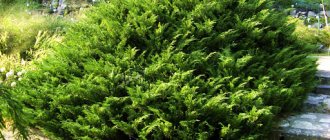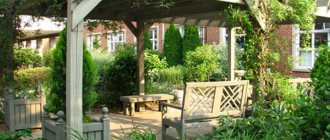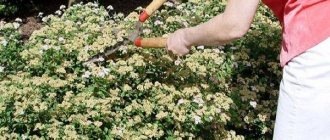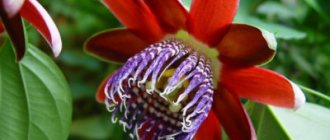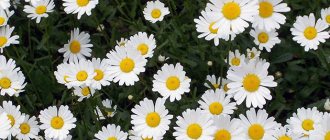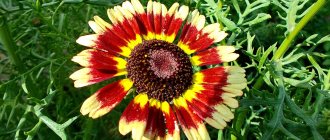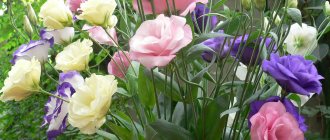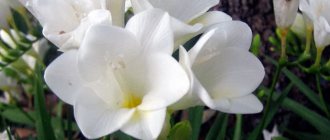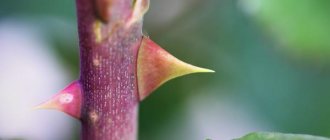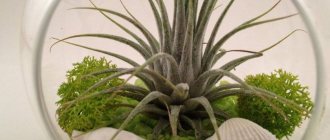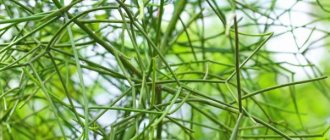Loading…
Loading…
Viburnum buldenezh is a widespread tree in the middle zone. High decorativeness and undemanding conditions made it an honorary guest in gardens and parks. This ancient variety was valued by gardeners even under Catherine II for its lush white inflorescences, similar to a snowball. The name of the variety - Boule de Neige - is translated from French and means “snowball”. The first description of viburnum buldenezh was made by the French breeder Lemoine, who developed this variety.
Description of the variety
Viburnum buldenezh is a variety of common viburnum and is a wide-spreading tree up to 4 meters high. With good care, this plant lives up to 50 years or more and pleases with long flowering every year. Buldenezh blooms with spherical inflorescences in early summer. Flowering is long-lasting, from 2 weeks to a month. The blooming flowers first have a greenish tint, then become bright white, and turn pink at the end of flowering.
A characteristic feature of the variety is the complete absence of odor in the flowers. The plant is winter-hardy, but in severe winters it can partially freeze out. The root system is of superficial type.
Pest protection and winter preparation
Viburnum buldenezh is resistant to disease, but aphids love to settle on it in any region. Moreover, this pest curls not only the leaves, as on other crops, but also the snow-white petals of the buds. Therefore, from spring to autumn, periodically come closer to the bush and check the leaves. If you find infested with aphids, immediately treat with an insecticide: Inta-Vir, Golden Iskra, etc. Many spray with a solution of ammonia: 4 tbsp. l. for 10 liters of water, add 4 tbsp. l. liquid soap.
For the winter, buldenezh and any bushes intended for growing in Siberia are not covered. The best protection against frost here is a thick blanket of snow. But housewives are worried about the young plants and in the first year or two they throw spruce branches or straw at the little new plants. In spring, these shelters are removed as early as possible so that the shoots quickly begin to be blown by the breeze and warmed by the sun.
Planting a seedling
The lifespan of Viburnum buldenezh and its flowering largely depend on the correct planting site and subsequent care. The most suitable place for it is well-moistened soil and light partial shade. It is advisable to replant in spring or autumn, since seedlings take root worse in the summer heat. The landing site is prepared in advance:
- dig a hole measuring at least 0.5 x 0.5 meters;
- drainage is laid at the bottom - brick fragments, crushed stone, sand;
- prepare a nutrient mixture from compost, ash, complex fertilizer and garden soil.
The seedling is immersed in a hole on a mound of nutrient mixture, the roots are straightened, the root collar is buried a few centimeters and covered with the remaining soil. After planting, water abundantly and add more soil after settling. The top of the planting site can be mulched so that the soil does not dry out quickly.
In group plantings, each seedling needs at least 4 square meters, since the tree is very spreading.
How to care
Buldenezh is a shrub that is quite easy to care for. It is enough to follow a few rules. When choosing a location for a plant, you need to understand that it will need a fairly large space. It must be protected from wind and direct sunlight. Light partial shade is perfect.
Japanese quince shrub - description of the plant and fruits
The snowball also needs pruning, which is carried out in spring or autumn and helps to form the necessary appearance of the bush. Even if a certain shape is not needed, then for more luxuriant flowering, pruning is necessary for the buldenezh.
Important! Regularly in the spring you need to trim old, dried branches. They will prevent it from fully developing and blooming.
Watering mode
Watering is the most important thing for buldenezh, especially in hot summer conditions. It must be performed regularly so that the earthen ball does not have time to dry out and is constantly in a moist state. Young seedlings need to be watered especially often. Watering should also be done in the fall, especially during the first snowless frosts.
Top dressing
Fertilizing is not a prerequisite for caring for garden viburnum, but it will not refuse organic and mineral complexes. The bushes need to be fed in the spring before the flowering period begins and in the fall before the onset of the first frost.
Features of care during the flowering period
During the flowering period, it is necessary to water the plant thoroughly and ensure that pests do not appear on it, which have a very positive attitude towards it. If they appear, the plant must be treated with an insecticide.
Note! From buldenezh you can make beautiful lush bouquets that will delight you with their beauty and delicate delicate aroma for up to 10 days.
Preparing the plant for winter
Buldenezh is a fairly frost-resistant plant; it can freeze only in very severe winters. To avoid this, you should take a number of steps in advance:
- in the second half of summer and autumn, do not fertilize with nitrogenous fertilizers;
- remove young shoots starting in the second half of August;
- from September gradually reduce watering;
- upon completion of leaf fall, make one abundant watering;
- mulch the layer with at least a 10-centimeter layer;
- cover young plants additionally, creating a mini-greenhouse.
Preparing young buldenezh for winter
Buldenezh is a plant that is ideal for any garden plot. It grows quickly and is distinguished by its unpretentiousness and vitality. Particularly pleasing is the length of his life. It is believed that every man should plant a tree, so why shouldn’t this tree become a beautiful bulldog? Every year it will grow, develop, gain strength, but at the same time it will never stop blooming magnificently, emphasizing the whiteness of its inflorescences with the brightness and richness of dense greenery.
Viburnum care
Caring for viburnum buldenezh consists of spring and autumn pruning and regular watering during the dry period. In the spring, the tree is inspected and broken, dry and diseased branches are cut out. In the fall, formative pruning is carried out - excessively thickening and inward-growing crowns are removed. With the help of formative pruning, a tree can be turned into a bush - the trunk can be cut down to the level of the stump. In spring, numerous side shoots will begin to grow from the root.
After pruning, all saw cuts should be disinfected with a solution of copper sulfate and covered with garden pitch.
In the middle zone in October, abundant moisture-recharging watering of viburnum is carried out. Its purpose is to stimulate increased root growth and prevent them from freezing in winter. It is advisable to feed the tree before watering.
Why a shrub may not bloom: reasons
Situations are also possible when viburnum Buldenezh does not bloom. Why is this happening? There may be several reasons for the lack of flowering:
- lack of regular watering;
- growing in direct sunlight or in strong shade;
- lack of feeding for a long time;
- pest invasion, disease.
As you can see, viburnum may not bloom due to improper or inadequate care. If you correct this situation, it will definitely delight you with lush color.
Viburnum Buldenezh is the best option for both landscape designers and ordinary gardeners. The plant is unpretentious, but requires full care. If you plant, grow and care for the plant correctly, you can receive abundant and lush flowering as a reward.
Video: snow globes or the beautiful Kalina Buldenezh
Fertilizers and fertilizers
For abundant and long-lasting flowering, Viburnum buldenezh needs to be fed regularly. In the first 2-3 years, the plant has enough nutrients stored in the planting hole. In subsequent years, it is fed with nitrogen fertilizers or compost in the spring, and phosphorus and potassium fertilizers in the fall. Fertilizers can be scattered in the tree trunk circle, loosened with a rake and watered abundantly. To ensure that all nutrients get directly to the roots, another method is used:
- along the entire circumference of the trunk circle, make holes in the ground 20-30 cm deep using a garden drill, crowbar or wooden stake;
- a little fertilizer is poured into each;
- the entire norm calculated for the tree is divided by the number of holes;
- then the tree trunk circle is spilled with water.
The fertilizer rates indicated on the packaging should not be exceeded. The plant will not be able to absorb them. This will lead to the growth of weeds and contamination of the soil with nitrates and other chemicals.
Before flowering, viburnum can be sprayed with a complex fertilizer containing boron. This microelement stimulates abundant flowering.
Reproduction options and methods
Propagation of viburnum buldenezh is possible only by vegetative means, since it is sterile and does not produce seeds. It is propagated in three ways - layering, dividing the bush and cuttings.
In order to get a new plant by layering, you need to do the following:
- in the spring, dig longitudinal grooves next to the bush;
- lay branches in them;
- press to the ground with wooden brackets;
- cover this place with soil and keep it moist all summer.
By autumn, the cuttings have formed their own roots, and in the spring of next year sprouts appear. In another year, when the cuttings have become stronger and have expanded the root mass, the new plant can be separated from the mother plant by cutting the buried branch between them with a sharp shovel.
Propagating viburnum using the second method - dividing the bush - is much faster, but more painful for the entire plant, since the roots are more damaged. This method is only suitable if it is formed as a bush and there are many branches coming from the roots. To do this, the root system is partially dug up with a shovel and the bush is cut so that each part contains both roots and branches. Then all parts are planted separately. After planting, the seedlings are watered.
The easiest way to propagate decorative viburnum buldenezh is by cuttings. For cuttings, healthy branches removed during spring pruning will do. Each cutting should have several buds. They are buried in the ground obliquely so that half of the buds are in the ground. From them, roots are subsequently formed. The cuttings are watered regularly. When a young bush with roots and branches is formed from the cuttings, it can be planted in a permanent place or left in the same place.
The soil around the seedling should be kept moist and loose so that the roots have enough moisture and oxygen.
How and where to buy viburnum Buldenezh
You can buy seedlings of a plant such as viburnum buldenezh in any specialized store, on the market, through an online store or in special nurseries.
Gardeners do not turn to the services of nurseries very often, since usually the seedlings of such a crop are of high quality at most points of sale.
Before you buy a viburnum buldenezh seedling, you need to pay attention to its root system. It should not be damaged or dry.
Viburnum pests and their control
The leaves of Viburnum buldenezh are severely affected by three pests: the leaf beetle, scale insects and aphids.
The leaf beetle gnaws leaves down to the veins and is capable of destroying the entire bush. To combat it, viburnum is sprayed with karbofos 2 times a season: in May to destroy the larvae, in August to get rid of the adults.
To destroy scale insects and aphids, the plant is treated with Aktara, Fufanon, and Agravertin. If the damage is minor, you can get by with folk remedies: infusion of garlic or ash with laundry soap.
Viburnum buldenezh also suffers from powdery mildew. A set of measures will help against this fungal disease:
- spraying with a 0.5% solution of copper sulfate in early spring before the leaves bloom;
- reduce watering; water only at the roots;
- treatment during the growing season with Bordeaux mixture;
- destruction of weeds that carry powdery mildew, primarily wheatgrass.
The incidence of viburnum is affected by crowded plantings and a thickened crown. Any photo of a healthy viburnum buldenezh tree shows that it grows freely, the crown is quite sparse, and the grass under the tree is mowed.
Following these simple recommendations will help you grow a healthy and beautiful tree. Decorative viburnum will live in your garden for a long time and will delight you with an abundance of lush snow globes every year.
Viburnum buldenezh in landscape design, the photo of which only weakly reflects its exotic beauty, is used everywhere:
Features and external characteristics
The variety performs purely decorative functions, since it is completely devoid of fruiting. In this regard, Viburnum Buldenezh is also called sterile. However, this circumstance does not in the least bother true lovers of beauty who grow shrubs on their site and every year admire the graceful white inflorescences of an almost ideal round shape.
Viburnum Buldenezh is a representative of the honeysuckle family, the height of the bush reaches 3.5 m (without pruning), and the diameter of the chic crown is about 1.5 m. Powerful branches initially grow straight, gradually diverging to the sides and forming a beautiful ball. To give the plant a more presentable appearance, gardeners trim the branches so as to create a hemisphere.
The main advantage of the variety is the stunning beauty of the inflorescences. The diameter of the balls hanging from the branches can reach up to 15 cm. Flowering begins in May. The pale green flowers that appear are soon replaced by cream or pale pink. Only when fully bloomed do they turn dazzling white. The inflorescences are quite large and heavy, which causes the thin branches to bend down under their weight. After a month, the flowers dry out and fall off without forming fruit. The life expectancy of the shrub is quite high - viburnum Buldenezh blooms for about 60 years.
With the arrival of autumn, the leaves acquire a crimson hue, which makes the viburnum stand out from other trees and bushes with their yellowed foliage. There is also a terry variety, Buldenezh, which differs from the snow globe only in the shade of the inflorescences - they are soft pink.
